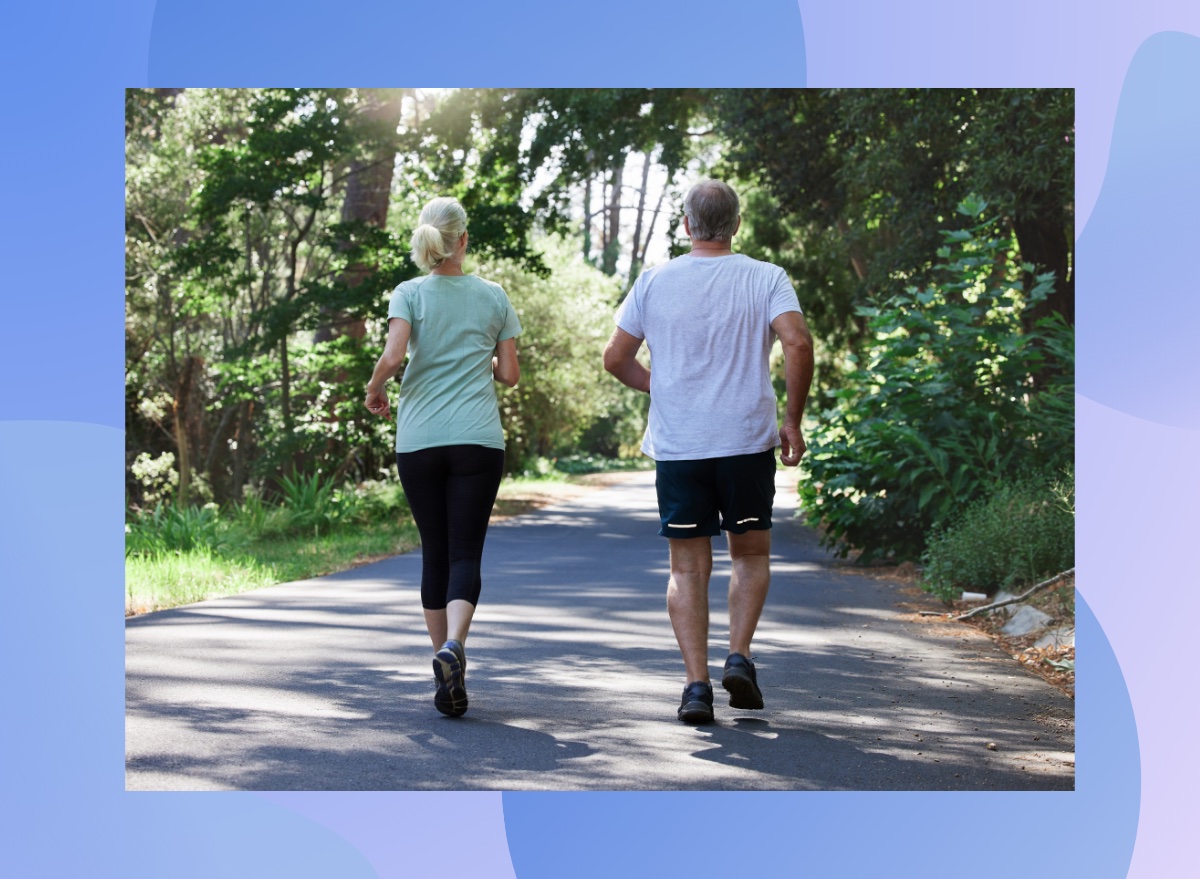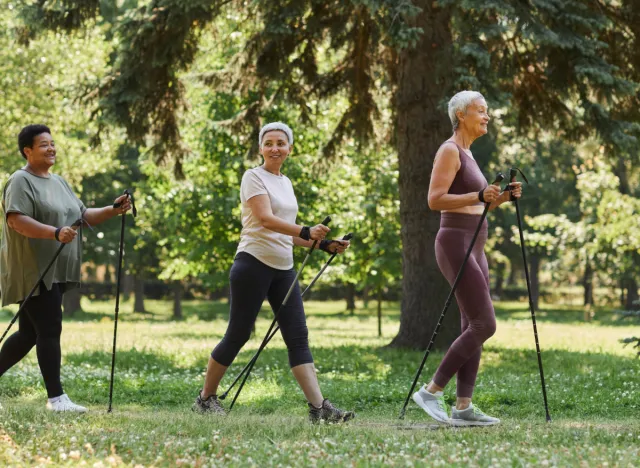Doing This While Walking Helps You Beat Stress, Say Experts

According to a report published earlier in the year by The Wall Street Journal, walking in nature comes with a range of added benefits. “Spending time in the woods—a practice the Japanese call ‘forest bathing‘—is strongly linked to lower blood pressure, heart rate and stress hormones and decreased anxiety, depression and fatigue,” observed the WSJ. And given that nature is such a profound antidepressant, it would only make sense that going for a walk with your therapist—instead of speaking to them indoors or on Zoom—would result in enhanced therapeutic benefits, as well. Turns out, many experts say it does.
Related: One Major Side Effect of Sitting on the Couch Too Much, Says New Study
A new article in The Guardian found that there is indeed a rise in people who are practicing therapy while going on walks—and noted that it’s a tactic that many therapists have been using for a while. “There’s something hugely freeing about being in open space and some people go deeper far sooner than they would do in a room,” Beth Collier, M.A., MBACP, the founder of the Nature Therapy School, which instructs psychotherapists on outdoor therapy, told The Guardian. “The part of the brain that is responsible for ruminative and negative thoughts— the subgenual prefrontal cortex—has been shown to quieten when we connect with nature, which gives people more space to process their problems.”
Read on for more reasons why you should consider asking your own therapist to take your session on the go, along with how you can take advantage of this tip even if you don’t do therapy. And for getting more out of your daily walks, make sure you’re up to speed on The Single Worst Shoes for Walking Every Day, According to a New Study.
Therapists Can Learn from Your Body Language

Therapists can observe your behavior for greater insight into your mind. “Movement is a really meaningful part of the work—pace, the direction they choose to go in, whether they choose to pause, to lean against a tree or sit down,” Collier said. “For example, people often walk faster and keep going if they’re angry or frustrated.” And for more reasons to get your stress in check, see here for The Crazy Things Your Stress Does to Your Body, Say Top Experts.
The Change of Seasons Can Be Symbolic

One person who does walks with her therapist told The Guardian that she found a spot in nature that was particularly soothing and they would return to it. “You feel like part of the landscape—see nature move on and change as you move on and change through the therapy,” she said. “The seasons can reflect the therapeutic process—the renewal of spring, the shedding of old leaves in autumn.”
You Can Go Running With Your Therapist, As Well

A psychotherapist named William Pullen, founder of Dynamic Running Therapy—and author of Running with Mindfulness—chooses to run with his clients. “We have a thinking brain and a doing brain,” he told The Guardian. “During periods of anxiety and depression, the thinking brain can go into overdrive and cause unhelpful ruminative thoughts, and we can lose motivation for almost everything. By moving our bodies, we can shift again towards the doing brain, discover that it’s still in there somewhere…. Movement can also combat that feeling of being stuck, and we can work through a problem by literally moving from A to B.”
You Don’t Need a Therapist to Reap the Benefits

You can just find a close friend and head out. “Find someone you like and trust to go on an empathy walk or run with you,” said Pullen. “You decide on a set amount of time to speak (10 minutes, for example) and you talk about whatever you need to while the other person simply listens. At the end of that, they repeat back to you what they’ve heard. They don’t offer solutions, but simply allow you to feel heard. You then do the same for them. There is no pressure involved as no one is being asked to come up with answers. It just provides a small moment of community that can be so helpful if you’re struggling.” And for some great side effects of walking more, learn What Walking for Just 20 Minutes a Day Does to Your Body, According to Science.








